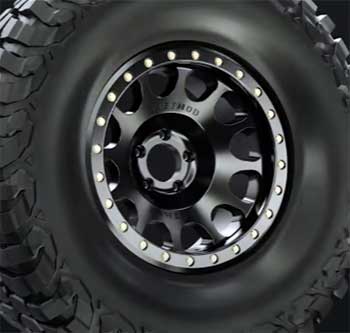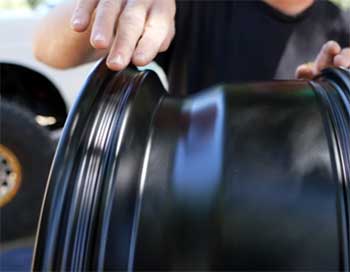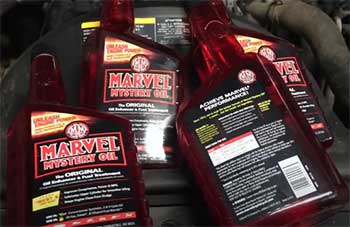I’m an off-road junkie, and nothing gets my heart racing like tackling a rocky trail or powering through sand dunes. But to conquer those terrains, your wheels need to keep up.
That’s where Bead Grip and beadlock wheels come in—two technologies designed to keep your tires locked in place when the going gets tough.
In this article, I’ll break down the differences, weigh the pros and cons, and help you decide which is right for your rig. Whether you’re a weekend warrior or a hardcore crawler, I’ve got you covered with real-world insights.
A Brief Comparison Table
| Feature | Bead Grip | Beadlock |
| Mechanism | Patented groove tech enhances grip | Bolted ring clamps tire bead |
| Air Pressure Range | Safe down to 10-12 psi | Can go as low as 5-7 psi |
| Street Legality | DOT-compliant, street legal | Often not street legal |
| Maintenance | Minimal, no special tools | Regular bolt checks, torque wrench |
| Weight | Lighter, similar to standard wheels | Heavier due to bolts and rings |
| Cost | $150-$300 per wheel | $300-$600 per wheel |
| Ideal Use | Moderate off-roading, daily driving | Extreme off-roading, rock crawling |
| Installation | Standard tire mounting | Specialized, time-intensive |
What Are Bead Grip Wheels?

I first stumbled across Bead Grip wheels when I was upgrading my Jeep for a desert trip.
Developed by Method Race Wheels, Bead Grip technology is a clever way to boost tire retention without the complexity of beadlocks.
The rim features a patented groove pattern that increases friction between the tire bead and the wheel.
When you air down, the tire presses harder into these grooves, making it less likely to slip off.
What I love about Bead Grips is their simplicity.
They don’t require extra hardware or fancy tools—just mount your tires like you would on any standard wheel. They’re designed for folks like me who want better off-road performance but still need a rig that’s street legal.
With Bead Grips, you can safely drop your tire pressure to around 10-12 psi, which gives you a bigger contact patch for improved traction on sand, mud, or loose gravel.
The key features here are the grooves themselves, which are machined into the wheel’s bead seat. They’re subtle but effective, and the wheels are DOT-compliant, meaning I can cruise highways without worrying about a ticket.
Plus, they’re lighter than beadlocks, so my fuel economy doesn’t take a hit.
What Are Beadlock Wheels?
Beadlocks, on the other hand, are the heavy hitters of the off-road world. I’ve seen them in action on rock-crawling rigs, and they’re built for the most extreme conditions. A beadlock wheel uses a bolted outer ring to physically clamp the tire’s bead to the rim.

This mechanical lock means you can air down to insanely low pressures—think 5-7 psi—without the tire budging.
The first time I helped a buddy install beadlocks, I was blown away by the engineering.
You slip the tire’s outer bead between the wheel and the ring, then tighten down 30-32 bolts (usually Grade 8 for strength).
The result?
A tire that’s practically welded to the wheel.
Beadlocks shine in situations like rock crawling, where low pressure maximizes grip, or in high-torque scenarios where tire slippage is a risk.
But here’s the catch: beadlocks are high-maintenance and often not street legal. Those bolts need regular torque checks, and the added weight can drag down your rig’s performance on pavement.
Still, for hardcore off-roaders, beadlocks are the gold standard.
Pros of Bead Grip Wheels
Let’s talk about why Bead Grips caught my eye. First off, they’re street legal. I can roll into a gas station or a trailhead without sweating a DOT inspection. That’s a huge deal if your rig doubles as a daily driver, like mine does.

Another big win is the low maintenance.
Unlike beadlocks, there are no bolts to check or rings to clean.
I just mount my tires, hit the trail, and call it a day.
The weight is another plus—Bead Grips are only marginally heavier than standard wheels, so I’m not burning extra gas or stressing my suspension.
Cost-wise, Bead Grips are wallet-friendly.
A single wheel runs $150-$300, which is half the price of a true beadlock. For moderate off-roading—think overlanding or weekend trail runs—they’re more than capable.
I’ve aired down to 12 psi on sandy dunes, and the tires held firm, giving me the traction I needed without any drama.
The installation is a breeze, too. Any tire shop can handle it, and I don’t need to invest in specialized tools. For someone who wants performance without the hassle, Bead Grips are a no-brainer.
Cons of Bead Grip Wheels
Nothing’s perfect, and Bead Grips have their limits. The biggest drawback is their air pressure threshold. You can’t go as low as beadlocks—10-12 psi is about the safe minimum.
If you’re tackling hardcore rock crawling, that might not cut it. I learned this the hard way when I pushed my Jeep too far on a rocky incline, and the tire started to slip.
They’re also less secure than beadlocks in extreme conditions. The groove tech relies on friction, not a mechanical clamp, so there’s a higher chance of debeading if you’re airing down aggressively or hitting obstacles at high speed.
For me, this isn’t a dealbreaker, but if you’re a competitive off-roader, it’s something to consider.
Lastly, Bead Grips are a proprietary technology from Method Race Wheels, so your style and size options are limited. I had to compromise on aesthetics to get the functionality, which stung a bit for a gearhead like me.
Pros of Beadlock Wheels
Beadlocks are the kings of extreme off-roading, and it’s easy to see why. Their biggest strength is letting you air down to crazy-low pressures—5-7 psi or even less.

That means maximum tire contact with the ground, which is a game-changer on slick rocks or deep sand.
I’ve watched rigs with beadlocks crawl up near-vertical slopes that would’ve sent me sliding backward.
The mechanical clamp is another huge advantage.
Once those bolts are torqued down, the tire isn’t going anywhere, no matter how much torque or side load you throw at it.
This makes beadlocks ideal for high-stress situations like rock crawling or desert racing.
Durability is a bonus, too. Beadlock rims are built tough, with reinforced lips that can take a beating from rocks and debris. I’ve seen beadlock-equipped rigs come out of brutal trails with barely a scratch on the wheels.
For competitive off-roaders, beadlocks also offer peace of mind. You can push your rig to the limit without worrying about a tire popping off. That confidence is worth its weight in gold when you’re miles from civilization.
Cons of Beadlock Wheels
Beadlocks aren’t all sunshine and rainbows. The biggest headache is maintenance. Those 30-32 bolts need regular torque checks—every few hundred miles or after a tough trail.
I borrowed a friend’s beadlock-equipped truck once and spent an hour with a torque wrench before we could hit the trail. It’s not fun, and if you skip it, loose bolts can shear off or damage the wheel.
Street legality is another issue. Most beadlocks aren’t DOT-compliant because the bolted ring poses a risk if bolts fail on the highway. In places like Australia, they’re outright illegal for road use.
Even in the U.S., you might get pulled over, especially if your rig looks “too off-road.” I’ve heard horror stories of fines and impoundments, which is a risk I’m not willing to take.
Weight is a major downside. Beadlocks are heavy—sometimes 10-15 pounds more per wheel than a standard rim. That extra mass hurts fuel economy, strains your suspension, and slows acceleration. On my daily commute, I’d feel every ounce of that added weight.
Cost is another kicker. A single beadlock wheel can set you back $300-$600, and that’s before tires or installation. Speaking of installation, it’s a pain. You need specialized tools and know-how, and most tire shops charge extra for the labor.
For casual off-roaders, the cost and hassle often outweigh the benefits.
Bead Grip Vs. Beadlock: A Real-World Perspective
When I’m choosing wheels, it comes down to how I use my rig. My Jeep is my daily driver, but I hit trails every other weekend—mostly moderate stuff like forest service roads or sandy washes.
Bead Grips are perfect for me. They give me enough grip to air down safely, they’re street legal, and I don’t have to babysit them with a torque wrench. Plus, they’re easier on my wallet, which means more cash for other mods.
But I get the appeal of beadlocks. Last summer, I joined a rock-crawling group, and the guys with beadlocks were unstoppable. They aired down to 6 psi and crawled over boulders like it was nothing.
If I were competing or living for extreme trails, I’d probably go beadlock and deal with the maintenance. The ability to push your rig to the absolute limit is hard to beat.
The choice boils down to your priorities. If you’re like me and split time between pavement and dirt, Bead Grips are the practical pick. They’re versatile, low-fuss, and legal.
But if you’re chasing the toughest trails or need bulletproof tire retention, beadlocks are worth the investment—provided you’re okay with the extra work and potential legal headaches.
Key Features Breakdown of Bead Grip And Beadlock
Let’s zoom in on the standout features of each. Bead Grip wheels rely on their patented groove technology, which boosts friction without adding weight or complexity.

They’re DOT-compliant, so you can drive anywhere, and they’re designed for standard tire mounting.
The trade-off is a higher minimum air pressure (10-12 psi) and less grip in extreme conditions.
Beadlocks, meanwhile, use a bolted ring for unmatched tire security.
You can air down to 5-7 psi, making them ideal for rock crawling or high-torque applications.
They’re also built tougher, with reinforced rims that shrug off abuse.
But the bolts require constant maintenance, and the wheels are heavier and pricier.
Both options improve off-road performance, but they cater to different needs. Bead Grips are the everyman’s choice—versatile and practical. Beadlocks are for the diehards who live for the toughest challenges.
Also Read: Are Black Rhino Wheels Worth It?
Maintenance And Practicality
I can’t stress enough how much maintenance sways my decision. With Bead Grips, I barely think about the wheels. They’re as close to “set it and forget it” as you can get. I check my tire pressure before a trip, air down on the trail, and that’s it. No extra tools, no fuss.
Beadlocks, though? They’re like owning a high-maintenance pet. You need a torque wrench, a socket set, and the patience to check every bolt. If you’re wheeling hard, you might need to retorque after every trip. I’ve seen guys carry spare bolts on the trail, just in case. A
nd cleaning mud out of those bolt holes? Not my idea of a good time.
For daily drivers, Bead Grips win hands-down. But if you’re trailering your rig to extreme events, beadlocks’ maintenance is just part of the game.
Cost and Value
Money talks, and wheels are a big investment. Bead Grips are the budget-friendly option at $150-$300 per wheel. For a set of four, you’re looking at $600-$1,200, plus standard tire mounting costs. That’s reasonable for the performance boost, especially since they double as street wheels.
Beadlocks are a different story. At $300-$600 each, a set can easily hit $1,200-$2,400. Add in specialized mounting (often $50-$100 per wheel) and the cost of a torque wrench, and you’re deep in the hole.
For casual off-roaders, that’s hard to justify. But for competitors or extreme enthusiasts, the investment pays off in performance and durability.
Street Legality and Real-World Risks
I’ve had my share of run-ins with overzealous cops, so legality matters. Bead Grips are DOT-compliant, so I never worry about getting hassled. They blend in with standard wheels, and there’s no external hardware to raise red flags.
Beadlocks, though, are a gamble. In the U.S., most aren’t street legal because the bolted ring could theoretically fail at highway speeds. In places like Australia, they’re flat-out banned for road use.
Even where they’re allowed, you might get pulled over if your rig looks too “off-road.” I’ve heard of guys swapping to standard wheels for inspections, which is a hassle I’d rather avoid.
My Take: Which Should You Choose?
Here’s where I get real with you. If your off-roading is like mine—weekend trips, moderate trails, maybe some overlanding—go with Bead Grips. They’re affordable, legal, and plenty capable for most terrains.
You’ll get better traction than standard wheels without the headaches of beadlocks.
But if you’re living for rock crawling, desert racing, or competitive events, beadlocks are your best bet. The ability to air down super low and the bulletproof tire retention are unmatched. Just be ready for the maintenance, cost, and potential legal issues.
Think about your rig, your budget, and how you wheel. If you’re splitting time between pavement and dirt, Bead Grips are the smart play. If you’re all-in on extreme off-roading, beadlocks are worth the extra effort.
Also Read: Is Method Bead Grip Any Good?
Frequently Asked Questions (FAQ)
Beadlocks often aren’t street legal because the bolted ring could fail at high speeds, posing a safety risk. Most don’t meet DOT standards, and in places like Australia, they’re banned for road use.
Yes, Bead Grip wheels are DOT-compliant and street legal, making them a safe choice for daily driving and off-roading.
Bead Grip wheels use patented grooves in the rim to increase friction with the tire bead, improving grip when aired down to 10-12 psi.
Beadlocks are heavy, expensive ($300-$600 per wheel), require regular bolt maintenance, and are often not street legal, limiting their use.
Wrapping Up
You’re out there chasing trails, and I’m right there with you, trying to make sense of the gear that’ll get us through. Bead Grip and beadlock wheels both have their place, but it’s about what fits your ride and your life.
Bead Grips are my go-to for their versatility, affordability, and street legality—they’re perfect for balancing daily driving with weekend adventures.
Beadlocks, though, are the heavy-duty choice for extreme off-roading, giving you unmatched grip at a cost. Weigh your needs, budget, and wheeling style, and you’ll find the right fit. Now, get out there and hit the dirt!

